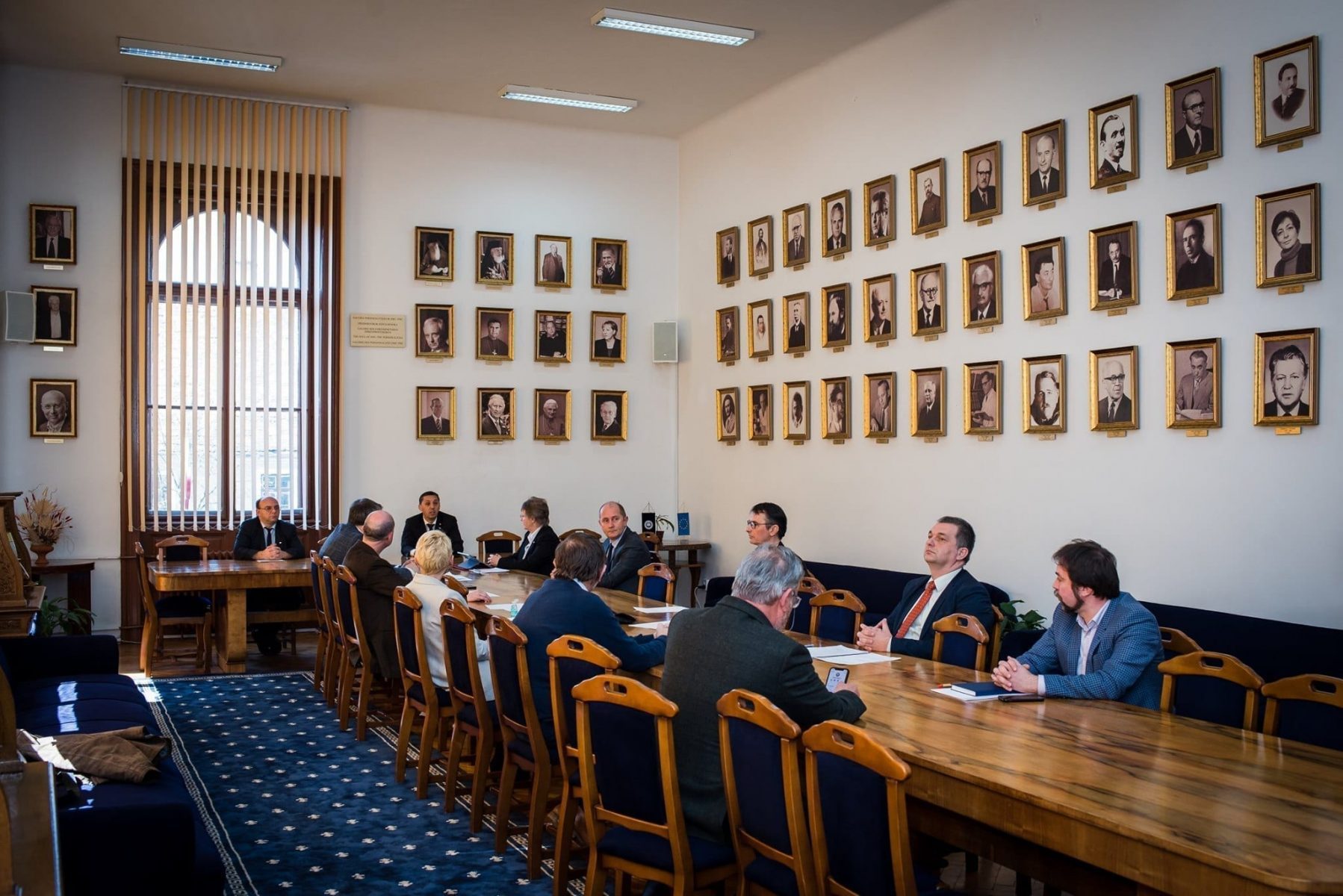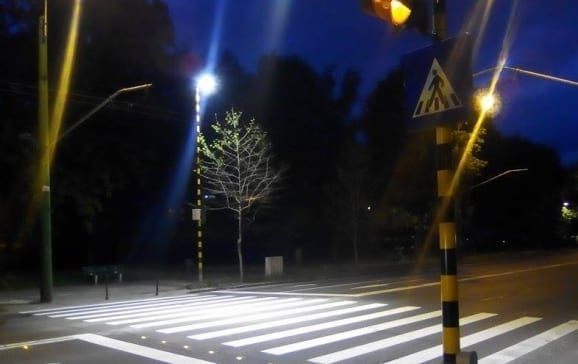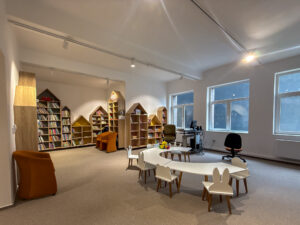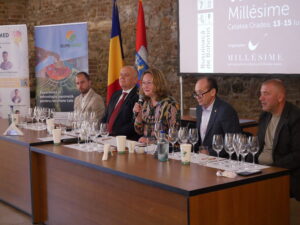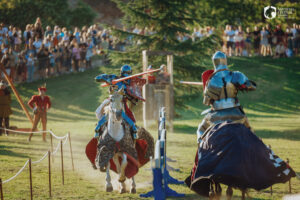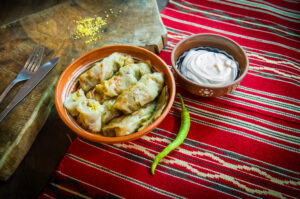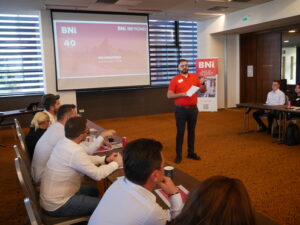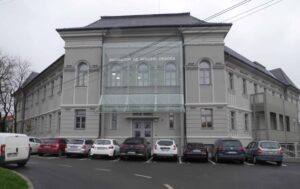We might ask ourselves, modern people residing in a loan-bought house or paying rent all our life, driving a leased car and spending hundreds or maybe thousands of euros/pounds/dollars (depending on the country of residence) monthly for regular household needs: how did they cope in the olden days?
By Vianu MUREȘAN
The bee*, a brilliant institution (* – Bee (old English): a community social gathering in order to perform some task, engage in a contest etc.: a building bee; a quilting bee; a harvesting bee)
Many peasants did not have a salary and women wouldn’t even be part of the payed workforce until the second half of the 20th century. Still, they did own a home, which they would build without needing a bank loan, they had a quiverful of children they would feed and dress, and if conditions allowed it, they would send their young ones to school as well. What did they have that we don’t, what did they know that we don’t? First of all, a secure property – land, and a social structure providing both security and support: the village community. What was this village social structure good for? The right answer – everything. The community substituted bank, insurance company, even police, justice system and, more often than not, hospital. From birth to grave, the villager relied on his peers – and supported them in turn if he could and knew how. The strength of the community, based on goodwill and mutual trust, was the peasant’s most important resource. He was never alone, never caught off-guard, never fired, the bank never sent him bailiffs, never took his half-paid home, never dragged him in courts for not paying his debts. The village community was a perpetuum mobile maintained by the energy of shared needs and duties. This is therefore the secret of the millennial endurance of the village habitus/habitat, actually the best organisation of human life throughout our civilisation.
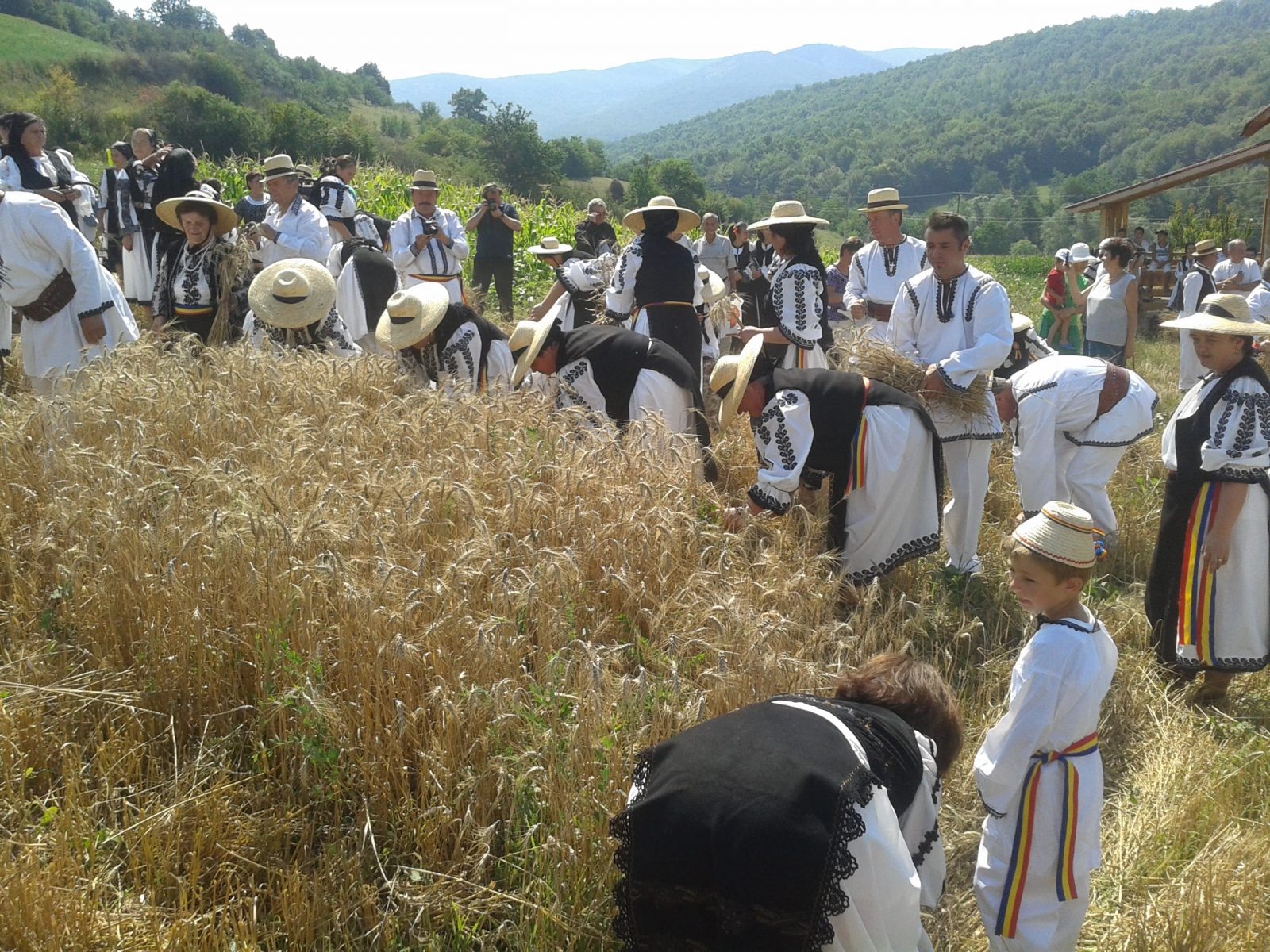
The village way to organise domestic life saw an institution working to everyone’s advantage with no collateral loss and, amazingly, without using outside resources. This was the bee – voluntary community work, tailored on precise tasks for every specific need: building a home or household, harvesting, wedding preparations etc. When a new family came into the community or when a family had lost their house by some calamity and needed a new household, part of the community would come together according to kinship and neighbourhood, would pool the effort and resources from their own households or from the community chest and, in two or three months, the house would be up. Yes, you read this well, those of you who earn a good salary and live hoping that, come retirement, you will have payed off the bank loan for your apartment. Yes, in two or three months that jobless person would have his new home. A home made of stone, clay, wood, cob, straw, egg, lime plaster, water – all from community resources. Sometimes bigger or smaller, better or thriftier – but always habitable and sometimes passed on from one generation to the next. Many cob or wooden houses endured through generations – some of these buildings now moved into village museums, examples of their vernacular style. The house would be done by the bee in two months, meaning the work of 7-8 people (always changing) for a few hours on certain days, helped by craftsmen in the community. The same went for field works and crops. Wheat harvesting, for instance, had to be done in just a few days, lest the grain would scatter or the rains would come. In a couple of days of bee, a family’s fields would be harvested. The bee then moved to the next family whose crop was ripe. Fields wouldn’t be seeded at the same time, wouldn’t mature at the same time, wouldn’t have the same light – so the different ripening periods allowed each family to benefit from bees. Harvesting bees were common – potatoes, corn, sunflower – as were threshing, hay mowing or gathering. Events such as weddings were also prepared by the community. Men carried the food and set up the barns, women helped the bride to finish her dowry and her gown, prepared the food and the drinks. Flour, milk, cream, eggs, oil, poultry, potatoes and other produce donated by villagers and relatives. The whole community was involved in the wedding preparations – and the whole community also attended the party.
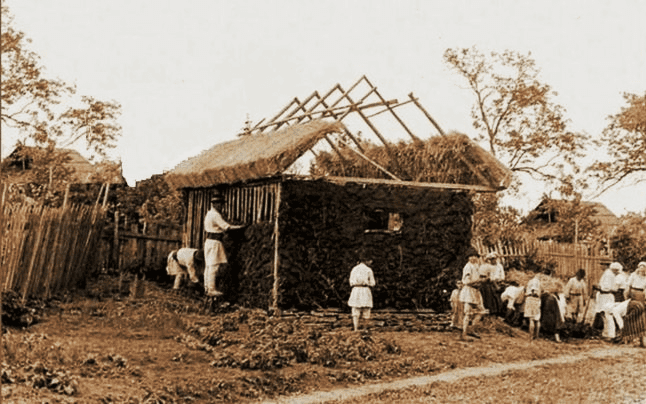
Why was the bee an institution? Because although it had no written rules, it was so deeply rooted in community conscience and morals that it would always work, somewhat inherently. A custom passed from generation to generation, it was part of that community’s ethics. Why was it brilliant? Because it took care of people’s needs through work and self-obtained resources; in other words, it worked as a system, as a self-sustained economy. No need for “cash injections” or bank loans. There is not a more intelligent economic concept than that by which a society can both preserve itself and reproduce by securing all elements necessary for its existence from the resources it has – both material and ethical. Solidarity is, in this case, an actual mode of action, determined by a need and an immediate purpose and in no way something ideological.
The community was a perfect institution, it assisted people all through their lives in a non-invasive way, usefully intervening when needed, integrating members and helping them live by its spirit. Man wasn’t abandoned, left in the lurch, humiliatingly kicked out the door or fired. The community never went bankrupt, it neverendingly reproduced itself from the resources and energy generated by its own spirit. It had a net profit, because it had no debts owed to outside entities and, furthermore, it was made without someone being at a loss. All goods circulated in that mutual aid system were jointly offered, gifted, made from the resources and by the work of the community members.
This is how life went on for hundreds and hundreds of years.
*
The Merry Cemetery of Săpânța
The cemetery is where “tradition” is sacredly maintained. Everyone attends at least one of the festival’s editions. It is held almost every day and is attended by one, two or more – as chance has it. Some old, some young, maybe even a baby arrived there much too early. But no one goes alone. The village accompanies the departed as if it were a wedding, as if they would go to their marriage. Just separated from his wife, with whom he has shared in life both the bitter peels and the delicious cake, as he gave himself at their marriage, time has now come for the man to give himself to another, to death – “bride of the world”, as the poem goes* (* – Part of one of one of the most famous Romanian folk poems – a pastoral ballad, The Little Ewe, in which death is presented as a metaphor: “A princess – my bride / Is the whole world’s pride.”). This is how things are. God didn’t want for a man to be alone, not even in the afterlife. Alas, if he’s going to get married, the deceased should be a bit giddy, in his heart – even if not showing it. Maybe he’s a bit shy, he doesn’t know how to show his soul, as he was instructed that it’s a shame to start laughing in public like a tosspot (Old word for inebriated). Whether young or old, whether passed away a maiden or burdened by time, the woman goes to the Heavenly Groom to get the holy kiss. But to Him the road is not so easy. They placed a rosary in her hand, for prayer. Her heart burns with joy, for yonder the Son of God awaits. Bards can’t be seen, but the lament of their instruments can be heard among the graves – sometimes sad, other times, joyful; sometimes for crying, other times for dancing. Bards are there unseen, hidden behind the strikingly painted crosses, sheltered in the shade because blistering sunlight isn’t good for them, and sing from time immemorial, God forbid someone goes to his final resting place without song.
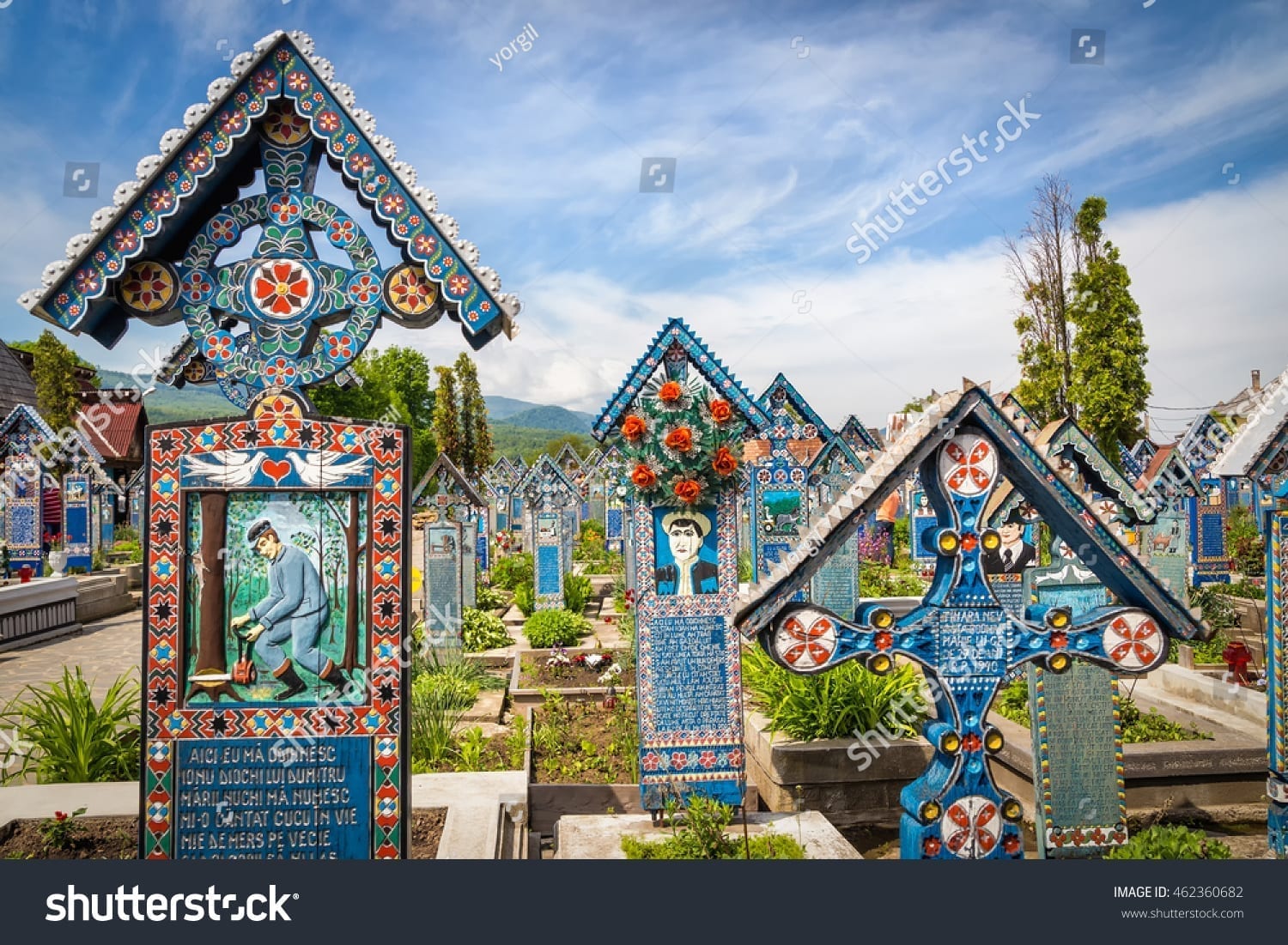
However unprepared for this “festival” you’d pretend to be, however dignified and driven towards much more serious things, you will eventually have to swallow your pride and go. Go to the cemetery, maybe see how things are there. What grandparents, parents, neighbours, village drunks who had knifed each other at the tavern over some ewes, luckless miners trapped underground by crumbling rocks – how all of them are, how they are hanging on, how they pass the time. How’s the old priest who for fifty years had baptised all babies in three villages, how’s the midwife who cut their cords, what about Mary the cook, who prepared the food for weddings and baptisms in the village until well after the age of 70 and couldn’t stand because of rheumatism. How is the teacher who opened the village school and who would stop by his unlettered parishioners and write missives to their army-drafted sons, writings always ending with warm hugs from mother dearest, but also concealed epistles from the lover feverishly waiting for the rooster crow, when her beloved might come…
Over there, in the cemetery, rests the erstwhile village. People celebrate and make merry. In the beginning they cried and cried, but then they said their goodbyes and each one eventually went back to their world. People don’t fear God’s judgement. God is good, He forgives man’s mistakes, and without sin is only the One born of the Blessed Virgin, Lord Jesus Christ. To Him they went, where there is no sorrow, nor wounded heart. Before going they went through confession and communion, they left messages on their crosses with their good deeds or their faults. Everyone knows weaknesses and failings. May God forgive us!
Witty carpenter Stan Ioan Pătraș, from Săpânța, had the idea to craft cheerful crosses in the cemetery and this has grown into a brand. This was in 1934, when he wanted to warm the heart of a young widow who had ordered a crossed for her departed husband. The carpenter then carved the cross wood, shaped it like a small shrine, with scenes from the man’s life – along with a cheerful message for the wife, written in first person. People liked the idea and wanted more of it – and so the merry cemetery started. Epitaphs in verse or prose are public statements of the departed – of course some fictional, since they were posthumously written by some unknown poet or even by the cross crafter. Still, the idea is exceptional – to sum up one’s life in a somewhat gibberish epitaph, without the heaviness and dramatism usually associated with death. Texts are most diverse in style and wording. Some narrate the context of death and relate the deceased with his or her family, the person’s character and defining treats, even if those might be of a drunkard reveller. For example: “This is where I end my game / And Pop Toader is my name / I loved so much the clarinet / But so did I the drinks, you bet / All along my time around / This I always had in mind / Food to eat and drinks all day / And the clarinet to play”.
These epitaphs depict a profession, a trade, family status, health, the accident or context of death, number of years lived. It’s like the departed introduce themselves on Judgement Day, and, before God, they recite their biography, in brief. In a naïve and playful way, the Merry Cemetery in Săpânța is a draft made by the dead for Judgement Day, their way of confessing to posterity and to God. And their cheerfulness is not ostentatious, readily displayed, but is the normal easiness the soul might have upon its meeting with God.
*
The Girls’ Fair of Mount Găina
The Girls’ Fair of Mount Găina (Alba county), in the Apuseni mountains (Massif in the Carpathian Mountains, on the Transylvanian plateau, western Romania), is the biggest open-air folk fair in Țara Moților (Țara Moților – The Land of the Moți (German: Motzen, Hungarian: mócok), ethno-geographical region of Romania in the Apuseni Mountains (see above), on the upper basin of the Arieș and Crișul Alb rivers. The ethnological origins of the moți are contested; some say they are descendants of the Slavs, Alans, Celts or Gepids. Over a dozen theories exist. They live in scattered villages at altitudes up to about 1,400 m, higher than any other permanent settlements in Romania), usually held at the end of July, around the feast of St. Elijah. Its first documentary mention was in 1816. Today it is focused on a parade of folk costumes, traditional music and dances – but the fair is very different now from what it was half a century ago or further in its history.
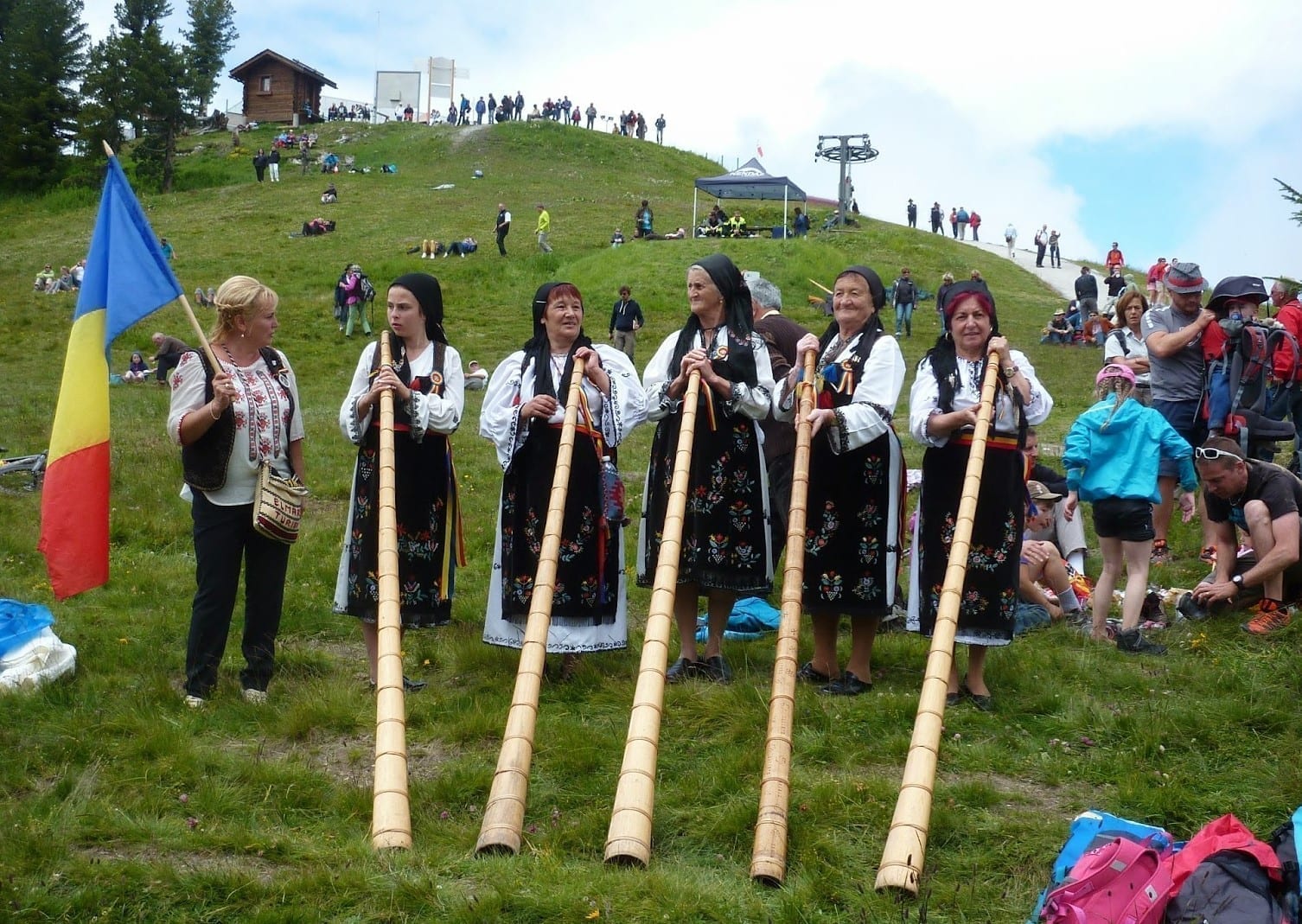
In the past, the celebration was a ritual for open-air matchmakings and weddings in a meadow on Mount Găina. To understand the origins of this, one must know Țara Moților. In the scattered villages of the Apuseni mountains, the notion of ‘neighbour’ may be vague, because in some settlements there is quite a long walk from one house to another. It gets tiring. Neighbours are closest when they can communicate which each other by loudly shouting from their fences, but in the old days a bucium (A type of alphorn, a tube instrument made from tree bark or wood used by mountain dwellers and shepherds for transmitting signals. The word is derived from Latin bucinum, originally meaning „curved horn”, an instrument used by the Romans (Wikipedia).) would be used to transmit major events – trouble, death, birth, fire, wolves or other animals of pray descended into the village etc. In those days, boys and girls would hardly look at each other in public, let alone touch. Don’t forget population was smaller, houses fewer, dwellers rarer. A celebration was needed, a fair somewhere, something everyone would agree upon so that people would gather – and therefore girls ready to be wed would meet single men.
It’s there, on top of the mountain, at altitude of nearly 1.500 meters, where the young girls went, along with their parents and small horses carrying their dowry, to meet boys from surrounding villages, eager to ask for their hand in marriage. The mountain road, anything but easy, could be a canon for future brides – but also a time of reflection. If the mountain ascent is hard, how would that of the marriage be? The mountain top you’ll eventually reach – but not so easily someone’s soul. On the other hand, young men making the climb to find their destined one knew only too well that you’d sooner get a bird mid-air than a woman’s thought. Back then, love at first sight wasn’t a way to select your ‘partner’ – or, in those days’ correct terms, your future husband or wife. Romantic literature hadn’t contaminated young hearts with its emphatic, melancholic spirit, and the myth of ‘soulmate’ hadn’t yet troubled the integrity of their mind. It was important that youngsters ‘like each other’, but then negotiations would start between families. The girl’s parents wanted to find out as much as possible – who is the fellow, from what village, what about his parents, does he have a good household, cattle, pasture, hayfield, forest, is he hardworking or is he‘friends with the bottle’, might he be a thug or have a wicked tongue, does he visit other men’s women at night. In turn, the boy’s parents were curious about the girl, if her parents are honourable, if her kin isn’t of ill-repute, if she knows to milk the cows, if she kneads the dough and knows about baking it in the stove, if she has any hidden affliction, if she had taken care of her womanhood and is clean, how big her dowry is, if she is cheerful, gentle and forgiving… and many such things.
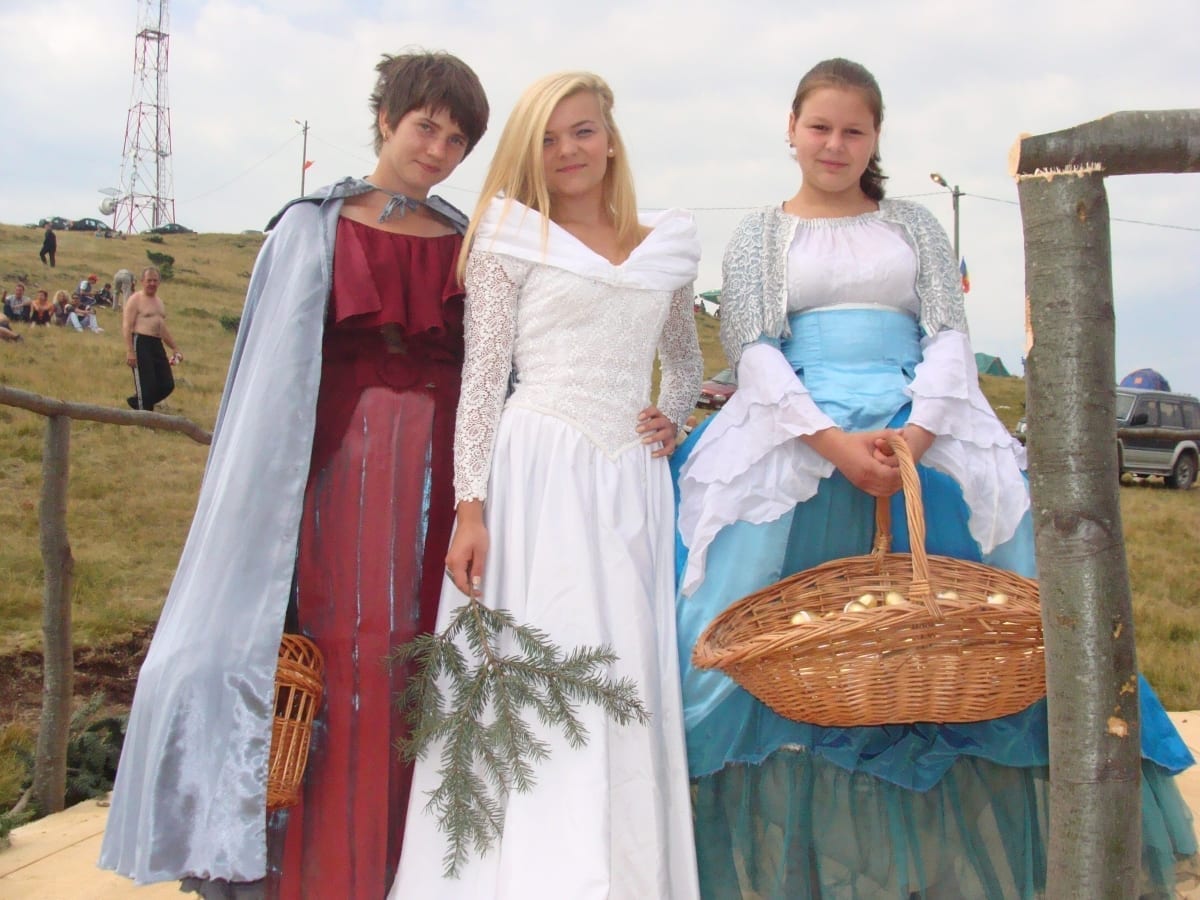
Meetings between parents actually meant complicated investigations about the family they were marrying into – and if at the end they were satisfied and the children liked each other, they would be wed at once by the priest taking part in these fairs. Food and drink would come out of the bags, a meal would be neatly set up with only ‘eco’ foods, consisting mainly of cheeses (you couldn’t bring something too sophisticated on a mountain top), people would eat, drink and dance. The deal was done and, after the frugal picnic party, parents would warmly kiss their daughter goodbye, since they would part and she would follow the young man at his house. From which she would come, sometimes child in hand, to visit her parents and younger siblings, on religious feast days. If her new village was too far, she would only come when field work was over or when cattle would descend from hills, in late autumn – and then only accompanied by husband or father-in-law. In winter, if snow wasn’t too high, she would come carolling with her family and in-laws on the second or third day of Christmas.
Today, girls and boys don’t negotiate on Mount Găina anymore, because they can go on Facebook daily, as opposed to the fair which is only held once a year, and parents don’t haggle because their terms are outdated. They do not understand the context of talks about feelings, marriage, family future. Young people go to Mount Găina to take part in folk costumes parades, to dance and have fun and, to use a beloved term nowadays, to ‘socialise’.
*
The Young Men of Brașov
‘Junii Brașovului’ (In an approximate pronunciation, ‘zhoonee brashovueluei’. June is an old word for ‘junior’ or ‘young man’. Literal translation, ‘the young men of Brașov’, one of the most important and historical Transylvanian cities, in central Romania. The city is also called Kronstadt in German and Brassó in Hungarian), as they are called in Romanian, appear in all their horseback splendour on the streets of Brașov only once a year, on the Sunday of St. Thomas. They are seven companies of riders, organised according to rank and status, dressed in folk costumes or uniforms, each company lead by a vătaf – a flag-bearer boastfully carrying their banner joined by two guardsmen. Each company with its own history, garb and flag, representing only that group and that group alone.
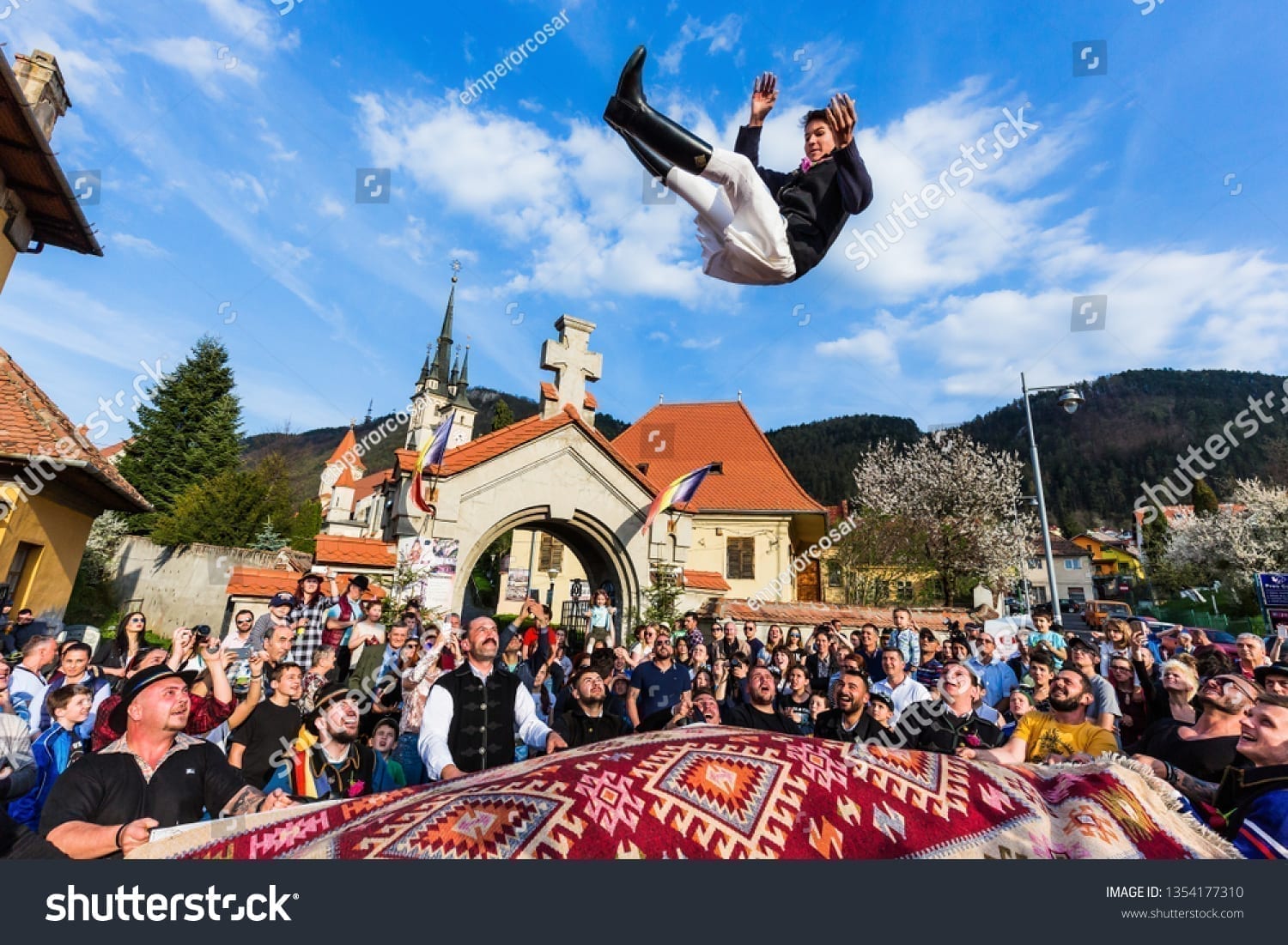
It’s difficult to say how old the Young Men’s ritual is; we are however certain that by 1924 all companies had been already established. According to some ethnologists, the parade of the juni is a pre-Christian custom combining agrarian and manhood initiation ceremonies. If we closely watch the archetypal elements of the procession, it is not far-fetched to see in the Young Men distant heirs of the Danubian Knights (Little is known about the Danubian Knights. Somewhere between religion and legend, they are called so because they are only documented as representations in a series of unexplained sculptures dated first century B.C. Some historians believe that the Danubian Knights may have had to do with pre-Christian pagan customs or beliefs), maybe the Cabeirs (In Greek mythology, the Cabeiri or Cabiri were a group of enigmatic chthonic deities. They were worshiped in a mystery cult closely associated with that of Hephaestus, centered in the north Aegean islands of Lemnos and possibly Samothrace — at the Samothrace temple complex — and at Thebes. In their distant origins, the Cabeiri and the Samothracian gods may include pre-Greek or non-Greek elements, such as Thracian, Tyrrhenian, Pelasgian, Phrygian or Hittite (Wikipedia).) or the Thracian Knight, cults that were widespread in the Dacian region after the Roman conquest and before the massive spread of Christianity in the 2nd-4th centuries A.D. The two Danubian warrior knights symbolised the forces of Good and Order, defeating in battle and and subduing the forces of evil, darkness and chaos. Regardless of its descendance, the man-horse association is a military archetype, indicating a battle situation, a victory moment. The Parade of the Young Men of Brașov appears to be, symbolically, the celebration after a heroic victory. In time, the ritual was assimilated into the Christian ways, as the beginning of the pagan new year – Spring – was integrated into the symbolism of the Holy Resurrection, which is traditionally perceived also as the rebirth of nature, the resurrection of plant life. At the parade held in the centre of Brașov, in the Sunday of St. Thomas, every company ceremoniously introduces itself to the gathered people and greets them with a loud ‘Christ is risen!’ (The Paschal Greeting, also known as the Easter Acclamation, is an Easter custom among Eastern Orthodox, Oriental Orthodox, Eastern Catholic, and Anglican Christians. In place of „hello” or its equivalent, one is to greet another person with „Christ is Risen!” or „The Lord is Risen!”, and the response is „Truly, He is Risen,” „Indeed, He is Risen,” or „He is Risen Indeed” (Wikipedia).).
The ‘first among equals’ are Junii tineri (Literally, The Junior Young Men), purportedly the oldest of the companies and the which had founded the order. Only unmarried men may be a part of it – thus supporting the hypothesis of a coming-of-age ritual. The company is lead by a vătaf (Vătaf (pronunced ver-tough) – in the Romanian Middle Ages, his tasks were similar to a chief’s of staff. He would be employed by a ruler (the voivod) or by an important nobleman (a boyar).), an armaș mare and an armaș mic (Pronounced ahr-mash mahreh, ahr-mash mick – senior and respectively junior men-at-arms; in Romanian courts and noble households they would ensure order was respected), instantly noticeable by their positioning ahead of the group and identified by their hats, decorated with coloured ribbons (read for the vătaf, yellow for the armaș mare and blue for the armaș mic). The Junior Young Men’s Flag was made in 1977 from red and blue silk, depicting the ‘Andrei Șaguna’ National College (One of the oldest, most respected and most famous public high-schools in Transylvania and in Romania) on one side and a Young Man on horseback, on the other. The second company is that of the Old Young Men, established in 1877 and formed only of married men. Their outfits are almost the same to those of the Junior Young Men, but they don’t wear ribbons on their hats. They are responsible with organising The Young Men’s wake (Parastas in Romanian, it is a custom of remembrance and a religious service. The Juni thus celebrate their ancestors), a tradition celebrated on Palm Sunday (Florii in Romanian, after Flora, the Roman goddess of flowers and gardens and also the word that derived into floare – flower. The Florii are a time of great joy and mark Jesus Christ’s triumphant entry in Jerusalem shortly before his Passion) at the Holy Trinity Church (on Tocile) in Brașov. The third company is the Junii Curcani, established in 1879, their members only married men living in the Pe Coastă (Literally, On the hillside) neighbourhood of Brașov, their name borrowed from famous Romanian troops (Junii curcani – literal translation, the Young Turkeys. Back in the 19th century, army uniforms weren’t as standardised as today. Many soldiers would therefore carry their own region’s traditions or customs in battle. Wearing a turkey feather in the hat was one of these traditions) of the Romanian War of Independence (1877). Their flag, designed in 1977, displays the effigy of Michael the Brave (Michael the Brave (Romanian, Mihai Viteazul), 1558-1601, the first ruler to unite all three Romanian provinces (Transylvania, Moldavia, Wallachia) into a single state) on one side and a curcan soldier on the other. The fourth company, the Junii Dorobanți (Also a troop name from the War of Independence), is only established in 1924, as a branch of the Junii Curcani. A dorobanț fighter is represented on their 1977 banner, after a description by famous Romanian poet Vasile Alecsandri. The fifth company, Junii Brașovecheni, was established in 1922 by young men in the old part of Brașov (Their name is a portmanteau of Brașov and vechi, meaning old). The sixth, Junii Roșiori (Roșiori, also a famous company in the War of Independence, so called because of their red tunics (roșu means red, in Romanian).), was founded in 1908 and gathers married men in the north-western part of the Șchei neighbourhood. They wear vividly embroidered shirts, wide waist belts, and a roșior woollen red hat. Their flag displays the image of Michael the Brave on one side and a roșior fighter on the other. Last but not least, the company of Junii Albiori (Their name means „the white ones”, due to their garments being mostly white), founded in 1860 in the bigger context of Romanian identity movements, was formed by butcher and merchant guilds in the Șchei neighbourhood. Their flag dates from 1977 and shows the portrait of poet Andrei Mureșanu, on one side, and a June albior on the other.
The ritual goes like this: the seven companies troop up – Junii Tineri first, then Bătrâni, Curcani, Dorobanți, Brașovecheni, Roșiori and Albiori. They then start their parade from the Prund neighbourhood, each company headed by a fanfare and lead by the vătaf and the two armași. The first stop of the Young Men is at the shrine for Captain Ilie Birt (18th century local hero. A somewhat legendary personality, fighting both the Turks (he headed a company of Juni) and the Saxon city authorities. Old stories describe him as a bit of an outlaw as well – but an ambitious one at that; as legend has it, he would even want to turn his neighbourhood, Șchei, into a republic, and actually pleaded for it (with no success) with the Emperor in Vienna), where they sing ‘Christ is Risen’ (Traditional Eastern Orthodox anthem). They then descend the Mureșenilor Street to Revolution Boulevard, then up on Nicolae Bălcescu Street, passing through the Gate of Șchei and on to Solomon’s Rocks (Pietrele lui Solomon). The Young Men dismount there and join into a ring dance on their song Hora Junilor, they play `throwing the mace`, invite girls to sârba, brâul, breaza, bătuta and other Romanian folk dances. After this moment ends, the companies of Juni round up in the same coming order and return to Union Square where, again, they sing ‘Christ is Risen’.
*
The Merry Funeral
The Funeral of the Fărșang (Fărșang (pronounced fer-shang) is a Romanian variant of the Saxon Fashing, itself coming for the German Fastshank, ‘the last party / the last drink’ before Easter Lent) is an ancient ritual in Szeklerland and has been mentioned in documents since the 14th century. It’s not held in a specific place – but in a particular timeframe, the week before Easter Lent. It is one of the most beautiful and most complex folk rituals in Transylvania. The Fărșang party is organised in the last Saturday before Lent and is attended by people in the villages of Ocna de Jos, Bârzava, Ciceu, Armășeni, Sândominic, Sâncrăieni, Sânsimion, Cioboteni, Ditrău, Remetea, Lăzarea, Plăieşii de Jos, Vlăhiţa – but also some city residents.
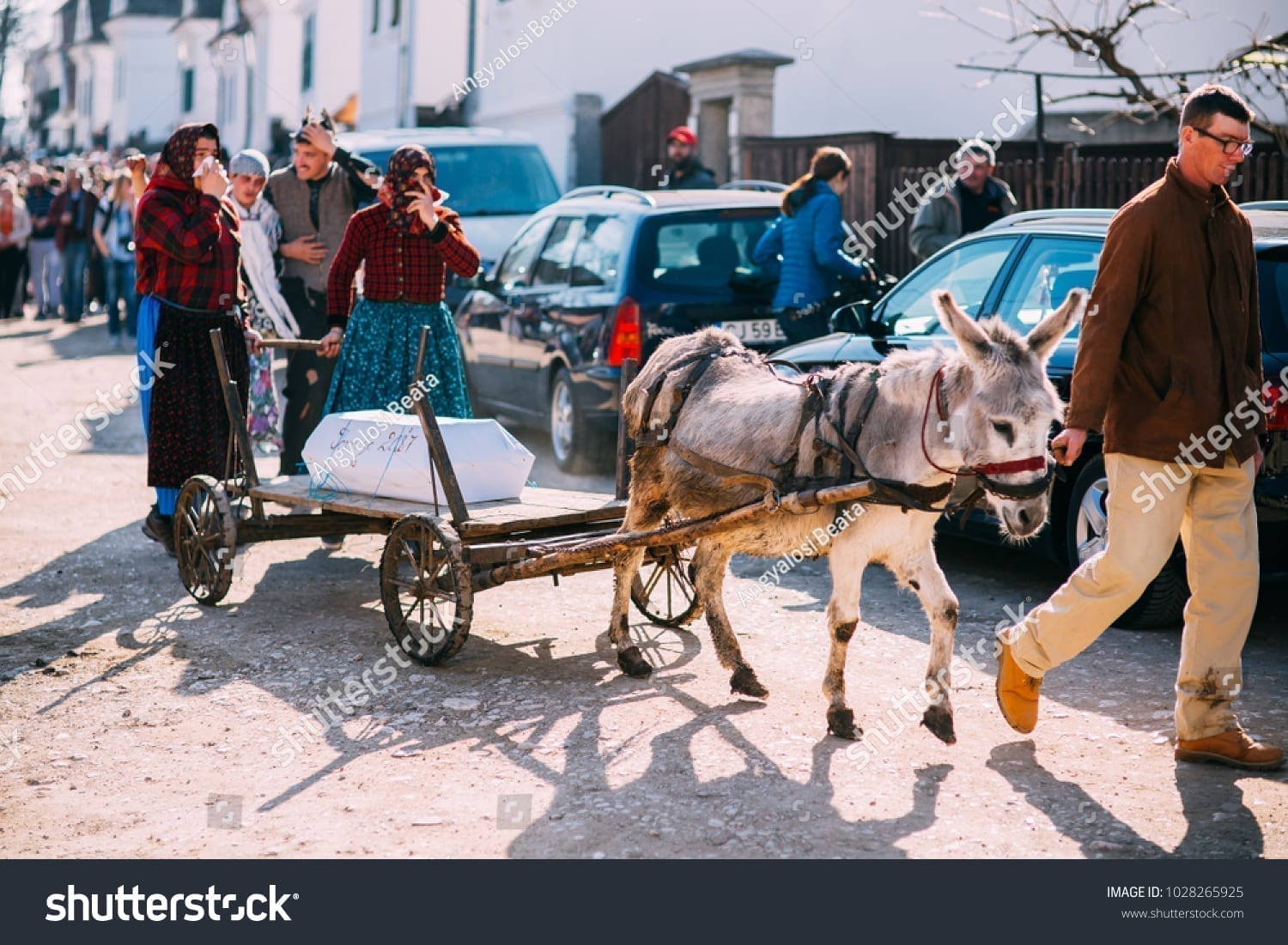
Simply put, it’s a spring ritual, it marks the ‘burial’ of Winter and the beginning of the astronomical year, the coming of Spring. It is actually a complex public spectacle, in which every player assumes a role in sacrificing a mythical character. In one case of the Fărșand, it was symbolically represented by a huge, dressed, straw puppet: the ilyes. Other celebrations see a bull-like character which would be ‘sacrificed’ at sundown, an interesting resemblance with the Mithraic cult in Iran.
The revellers of these rituals are masked or disguised as priests, doctors, mourners, drunks, convicts, beggars, high-society gentlemen, grooms, devils, Death. The procession, led by musicians, roams the streets singing; revellers rattle and jangle all kinds of percussive instruments, snap their whips, create a huge uproar with the mythical task of banishing evil spirits, cold weather and wickedness – altogether marking the rebirth of nature and renewal of life. The deafening sounds are meant to act like a talisman of sorts. At crossroads, the procession stops and performs a burying ritual, with a priest and vicars present. It is actually a mock-burial, held jokingly, to ‘prank’ the deceased.
The community ridicules mourning, grieves the representation of Winter or Evil, as if its loss were tragic. The personification of Winter and the parting from it, although wished for, is a source of sorrow. Dramatizing this false sadness is an element of high ritualic subtlety. It’s like the ‘deceased’ could be deceived with fake cries grieving, so that the road to the Great Beyond be a peaceful one – although, behind the mourning and grief, people muster the joy of riddance from Evil/Death the ‘departed’ symbolizes. Ilyes/the puppet represents the evil that must be driven away, destroyed, burned. In this so-called mourning, the character is being derided, mocked by the grieving men and women. The `deceased` has its man parts exposed, to be ridiculed by women who embrace him and call him ‘lover’, just to make fun of his impotence. The jeering and sexual humiliation of the character is a form of ‘magic’ by the grievers, who now make fun of the symbol of manly power and pride.
This parody mockery is meant to reverse the relation of the community with death. The deceased is mourned as a matter of principle, the grief is real because the usually loss is perceived as dramatic – not so for the Fărșang: a fake loss generating just an apparent suffering, a mask for joy. The procession is in fact a carnival. Having a funeral and a carnival in a joint ritual confers the Fărșang an extraordinary depth, and the dramatic technique for this is parody: the funeral routine is there precisely to obtain the specific effect of a carnival – the fun, the joy, the shared exuberance. The funeral-carnival puts together, in its oxymoronic tension, the duality of death and life, of Evil and Good – coincidentia oppsitorum (Coincidence of opposites (Lat.).). Yes, someone has died – but it’s a good thing. Because one died, one must be mourned and buried – but we grieve and mourn… happy of the riddance. The joyful mourn, the controversial burial are elements of the ‘reverse order’ the Fărșang ritual requires.
The straw puppet is in fact an allegory of Evil, and its destruction follows the steps of a substitution-type magic ritual. Destroying the straw construct means destroying the Evil it substitutes. It’s a funeral concluded with a party, it marks death and resurrection. The old year, with all its evils, is buried along with the Fărșang. After the destruction of Evil and the burying of death, joy and partying follow. After the traditional wake, people set up tables laden with cheeses, sausages, boiled potatoes, pickles, bread and lard, paprika and red onions, cured ham, pies, donuts, Szekler bread, pălincă (Pălincă (Hungarian, Pálinka) – traditional plum brandy, 30%-70% alcohol by volume) and mulled wine. And in the evening, everyone takes part in the Fărșang Ball, the last celebration before Easter Lent.
(From the special edition of TB 86 – „ENJOY TRANSYLVANIA!” – May/June 2019)








